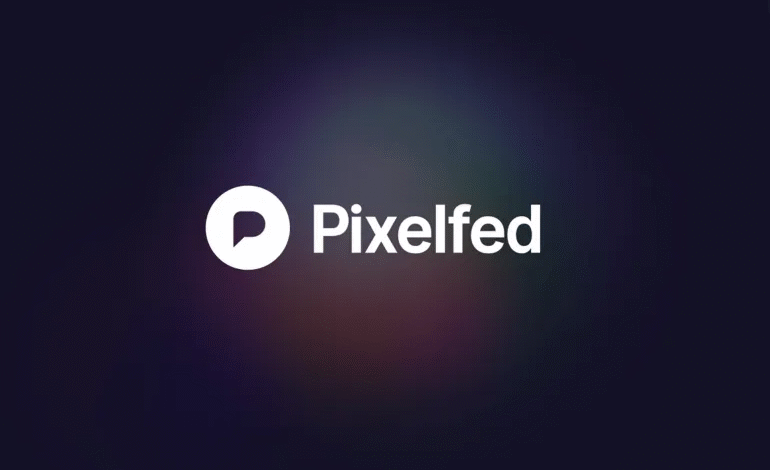Pixelfed: A Decentralized Alternative to Instagram Focused on Privacy and Community

In recent years, social media has undergone significant transformation. Platforms like Instagram have evolved from simple photo-sharing apps into algorithm-driven systems that prioritize ads and engagement metrics over user experience.
In a digital world dominated by major social platforms, many users have grown frustrated with issues related to privacy, intrusive ads, and opaque algorithms. This discontent has paved the way for alternative platforms offering a different kind of experience—one such platform is Pixelfed.
Pixelfed stands out as an open-source, decentralized alternative that provides a familiar Instagram-like experience without the downsides. It allows users to share photos with a strong emphasis on privacy, making it a promising contender in a market increasingly aware of the importance of data protection and resistance to tech monopolies.
What is Pixelfed?
Pixelfed is a decentralized, ad-free photo-sharing platform that uses the ActivityPub protocol. This enables interoperability with other platforms in the Fediverse—a collection of interconnected, independently operated servers that allow users to interact across networks.
Unlike centralized platforms like Instagram, which are owned and controlled by a single company, Pixelfed’s decentralized nature gives users the freedom to choose or even host their own servers. This approach promotes autonomy, transparency, and control over one’s data.
Pixelfed’s mission is to restore the freedoms of social media—empowering users to share photos without being tracked or manipulated by engagement-based algorithms.
Key Features of Pixelfed
When comparing Pixelfed to Instagram, it becomes clear that the former offers a different user experience in several crucial aspects.
One of the main criticisms of Instagram is its heavy reliance on advertising and tracking algorithms. Meta collects vast amounts of user data to optimize ads and drive engagement. In contrast, Pixelfed is completely ad-free and does not harvest or sell user data.
Pixelfed is community-funded and operated, eliminating dependence on advertising revenue. While its interface may resemble Instagram’s at first glance, it offers more customizable privacy controls, allowing users to manage who can view their content.
Where Instagram curates users’ feeds based on algorithms, often prioritizing high-engagement or ad-friendly content, Pixelfed presents posts in chronological order. This gives users an unfiltered, authentic browsing experience without algorithmic interference.
Additionally, Pixelfed does not artificially promote sponsored posts or influencer content. Users can post photos, stories, and albums—just like Instagram—but without AI-driven enhancements or algorithmic boosts.
Importantly, Pixelfed lets users host their own servers or select trusted community-run instances, granting full control over where their data resides. Unlike Instagram’s centralized structure, no single entity owns or controls the entire network.
Users can also interact across platforms in the Fediverse without needing multiple accounts, enhancing accessibility and interoperability.
These fundamental differences make Pixelfed a powerful option for those concerned with privacy and corporate overreach.
Why Users Are Switching to Pixelfed
There are several reasons why users are seeking alternatives to Instagram, with privacy concerns leading the way. Following multiple privacy scandals involving Meta’s platforms, many have started to explore more respectful and transparent options.
Users are also frustrated by the increase in ads and sponsored content on Instagram, which dilute the platform’s original focus on personal content. Some prefer to support nonprofit, community-driven initiatives over tech giants.
Instagram’s algorithm often limits content reach based on opaque criteria, which irritates users who want their posts to reach followers without interference. Pixelfed addresses this by displaying posts in chronological order and offering local server hosting for region-specific content.
Moreover, Instagram is engineered to be addictive—designed to keep users scrolling for as long as possible to maximize ad revenue. This business model has been linked to negative mental health outcomes, including depression, low self-esteem, and body image issues.
Competing for Attention
Although Pixelfed does not currently pose a direct threat to Instagram due to its smaller user base and lack of commercial features, there are signs that Instagram is beginning to respond to user dissatisfaction by tweaking its algorithms, reducing intrusive ads, and improving privacy settings.
Despite its limited exposure, Pixelfed has potential for growth—especially if it continues to focus on its strengths: catering to photographers, artists, and privacy-conscious communities. These users value a clean, ad-free space that prioritizes meaningful content over commercial gain.
Pixelfed’s future success will likely depend on expanding features like stories and live streaming—without compromising its core principles—and offering better content management tools.
Rather than compete directly with Instagram, Pixelfed can thrive by targeting niche audiences:
- Privacy advocates who seek alternatives that respect user data.
- Open-source enthusiasts who support decentralized technology.
- Users tired of ad-saturated platforms looking for a simpler, cleaner experience.
Conclusion
While Instagram remains the dominant force in photo sharing, Pixelfed offers a refreshing, privacy-focused alternative. Its success will depend on its ability to attract users who value freedom, transparency, and genuine community engagement.
As awareness of digital privacy grows, platforms like Pixelfed may become increasingly attractive—not just as alternatives, but as the preferred choice for conscious digital interaction.








